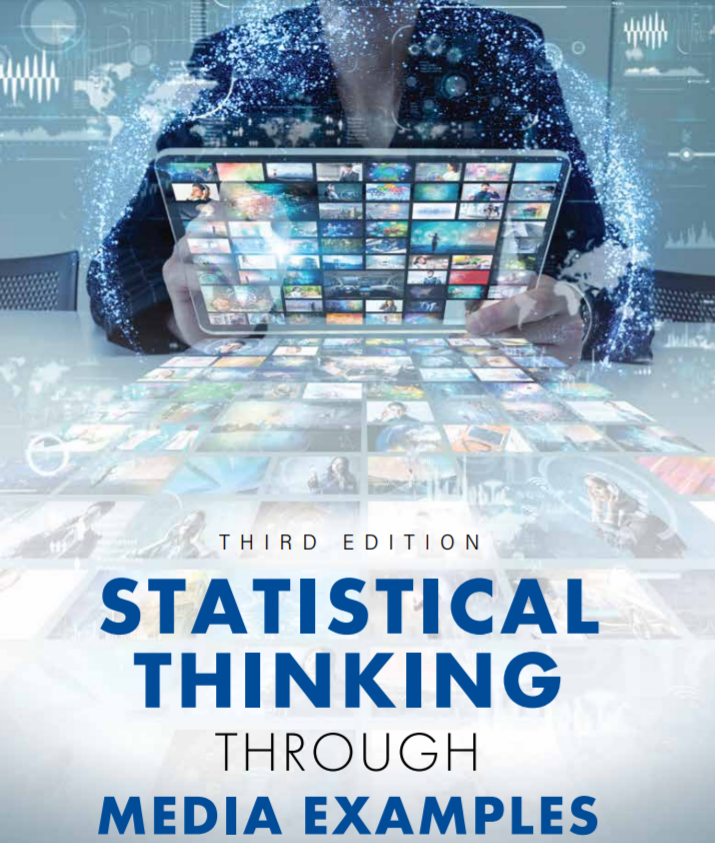
“Statistics is the application of mathematics to data in order to turn data into meaningful information about how the world works. Statistics provides us with the tools to reason with the variation in data within mathematical frameworks known as probability distributions. Statistical thinking is at the foundation of statistics, and it trains your mind in how to pursue truth in the world around you through the use of data, statistics, and the methods of statistical analysis. Throughout this book, statistical thinking concepts are explained through the context of media examples that are engaging, up-to-date, and related to our everyday lives. Data and statistics, along with good statistical thinking, will continue to bring understanding and insight into how the world works. Statistics are estimators of truth, but good statistics are more than good enough to help us understand how to live healthier, more enlightened, and more informed lives. “
- Adapted from “Preface” and “Introduction” from “Statistical Thinking through Media Examples”
Overview of this book:
This “Statistical Thinking through Media Examples” is a textbook written to teach the “statistical thinking” skills to the students. While statistical concepts were created based on mathematical ideas, statistical concepts can be easily understood without a rigorous mathematical background, and this book focuses on teaching statistical concepts with examples from the media.
I worked as a teaching assistant for the “Statistical thinking for data science” course at Columbia University, where Professor Donoghue used this textbook to teach that course. I was in charge of teaching weekly Python labs, and no mathematical background was required to take this course.
Statistics is one of the most important subjects that everyone should be aware of, and I found this textbook to be very interesting to read, even though I already know the statistical concepts that were covered in this text. I’m sure that it serves as a great introductory text to give a foundational background in statistics.
R labs:
It is vital to learn programming to effectively analyze large datasets, which we see in our current world. We chose R programming language, as it is a programming language that is specialized in statistical analysis, and it is one of the most widely used statistical programming languages in academia and industry. You do not need any prior programming experience to understand these labs, and we hope that you use these labs to gain an understanding of how to use computer programming to analyze large dataset.
Python program to create some figures in chapters 5 and 6:
Get the book:


Comments